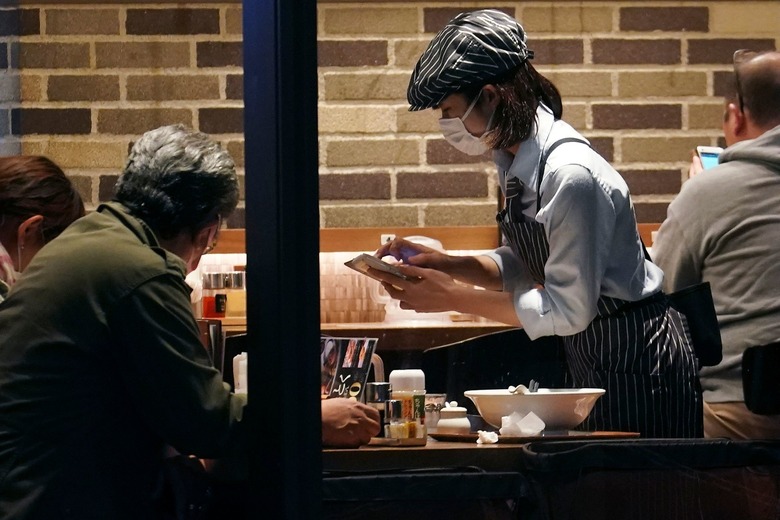Scary Coronavirus Experiment Shows How Easily The Virus Spreads In Restaurants
- A new experiment from Japan shows how easily and comprehensively the novel coronavirus can quickly spread throughout restaurants, which are among the businesses that states and cities are starting to cautiously open up in this first wave of reopening the economy.
- The experiment, detailed below, uses paint on the hand of one of the participants as a stand-in for the virus that ends up being transferred almost everywhere in the restaurant.
- Visit BGR's homepage for more stories.
As states and cities around the world start to gradually reopen their economies during this first wave of the coronavirus pandemic, there are some pretty uniform approaches being pursued. Things like encouraging (or mandating) guests to wear masks, to socially distance, and to remove tables and chairs. However, we're also starting to learn more about what airflow inside a restaurant does to the chances that the COVID-19 virus will spread.
And NHK, Japan's public broadcasting organization, has just presented the results of an experiment showing how easily the virus can spread inside a restaurant, with results that might put some of you off of going back into a restaurant anytime soon.
Let's start with the latter. NHK, working with infectious disease experts, set up the experiment with 10 participants. Paint that's only visible under a black light was applied to one person's hand, representing traces of the virus after that person had hypothetically coughed or sneezed into their hand. The rest of the participants helped themselves to a buffet set up for half an hour.
Once the black light is turned on, you see the participants sitting stunned, as they take in everything they say around them. Needless to say, you can see splotches of white paint everywhere. It's on some of their hands, on the table, and even on some of their faces (all around one guy's mouth, in particular).
That video above showing the results has been going viral, for pretty obvious reasons. However, another version of the experiment was also attempted, with participants led through much more stringent requirements such as keeping dishes separated and prodding diners to wash their hands before and after. Fortunately, no paint could be seen on any of the participants at the end of that version of the experiment.
On a somewhat related note, Professor Kevin Van Den Wymelenberg and five other researchers, from the University of Oregon and the University of California, have authored a paper showing how to minimize viral transmission inside buildings. They created models showing how the coronavirus can spread throughout a room with no windows open and only an air conditioner or fan that's circulating air, compared to the same room with an open window.
"What we were seeing is that, with increased outdoor air exchange, through the open window... particles deposit more quickly and then also be exhausted from the airstream more quickly," Wymelenberg told CBS News.
The fresh air ended up being better for diners and helping limit the number of potential infections of the virus.
"I think we're all going to be considering our air systems in buildings much more seriously moving forward," he said. "And I think restauranteurs will be included in that scenario."
